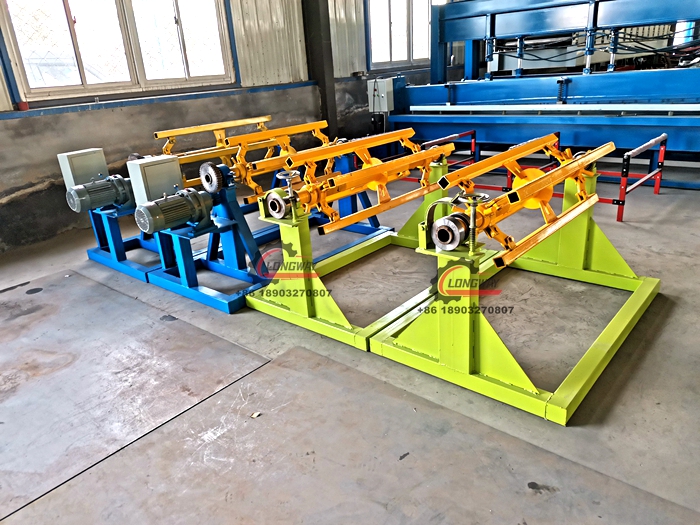ridge capping roll forming machine manufacturer
Understanding Ridge Capping Roll Forming Machines An Essential Tool for Manufacturers
In the modern world of construction and architecture, the importance of durable and aesthetically pleasing roofing materials cannot be overemphasized. One vital component in achieving these qualities is the ridge capping that ensures the peak of a roof is adequately protected from the elements and visually appealing. To manufacture these essential roofing accessories efficiently, a ridge capping roll forming machine becomes a crucial asset for manufacturers.
What is a Ridge Capping Roll Forming Machine?
A ridge capping roll forming machine is a specialized piece of equipment designed to produce ridge caps from metal sheets. Ridge caps are typically used to cover the joints where two sloping roofs meet at the ridge, providing protection against moisture ingress, wind, and other environmental factors. The roll forming process involves feeding a flat metal strip through a series of rollers, which gradually shape the material into the desired profile.
Key Features of Ridge Capping Roll Forming Machines
1. Precision Engineering High-quality ridge capping roll forming machines are designed with precision in mind. The rollers are engineered to meet specific tolerances, ensuring that the final product has uniform dimensions and superior finish qualities. This precision is critical to guarantee proper fitting on roofs and long-term performance.
2. Versatility Modern machines are often equipped with advanced technology that allows manufacturers to produce various profiles of ridge caps. This flexibility caters to different architectural styles and customer preferences, making it easier for businesses to meet diverse market needs.
3. Automatic Control Systems Many ridge capping machines come with PLC (Programmable Logic Controller) systems that enable automation of the forming process. Automated systems reduce human error, improve consistency, and enhance production efficiency. Operators can also save time by adjusting settings for different profiles without the need for extensive manual intervention.
ridge capping roll forming machine manufacturer

4. Sturdy Construction Given the harsh environments that roofing materials are subjected to, ridge capping roll forming machines are built to last. Manufacturers utilize high-quality steel components to ensure durability and reduce maintenance needs over time. A well-constructed machine can deliver thousands of ridge caps with minimal wear and tear.
The Importance of Quality and Design in Manufacturing
Quality materials and design intricacies directly affect the performance of ridge caps. Manufacturers often prefer machines that can handle various types of materials, including galvanized steel, stainless steel, and aluminum. The ability to work with different gauges and finishes widens the market for manufacturers and allows them to respond to specific customer requirements.
Moreover, the design of a ridge cap significantly influences its performance. A well-designed ridge cap will have features that enhance its ability to shed water, resist wind uplift, and withstand thermal expansion and contraction. Therefore, having access to advanced roll forming machines that can create customized designs is a significant advantage for manufacturers.
Conclusion
In summary, ridge capping roll forming machines are indispensable to manufacturers looking to produce high-quality roofing accessories. With precision engineering, versatility, and automated control, these machines streamline the production process while ensuring superior product quality. As the demand for effective and aesthetically appealing roofing solutions continues to rise, investing in advanced roll forming technology is essential for manufacturers aiming to enhance their competitive edge in the market.
As industries evolve, staying updated with the latest machines and technologies will be crucial for manufacturers focused on innovation and quality. Selecting the right ridge capping roll forming machine not only ensures better production efficiency but also contributes to the overall quality of roofing systems in residential and commercial applications.
-
Roof Panel Machines: Buying Guide, Types, and PricingNewsJul.04, 2025
-
Purlin Machines: Types, Features, and Pricing GuideNewsJul.04, 2025
-
Metal Embossing Machines: Types, Applications, and Buying GuideNewsJul.04, 2025
-
Gutter Machines: Features, Types, and Cost BreakdownNewsJul.04, 2025
-
Cut to Length Line: Overview, Equipment, and Buying GuideNewsJul.04, 2025
-
Auto Stacker: Features, Applications, and Cost BreakdownNewsJul.04, 2025
-
Top Drywall Profile Machine Models for SaleNewsJun.05, 2025








